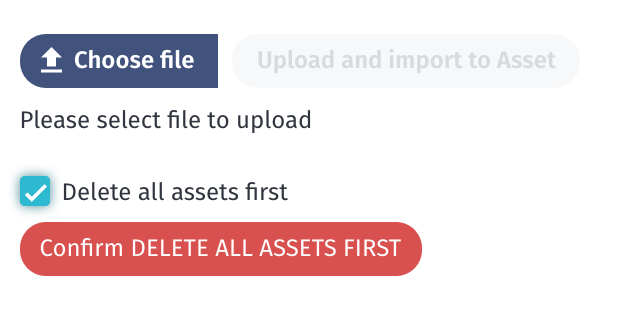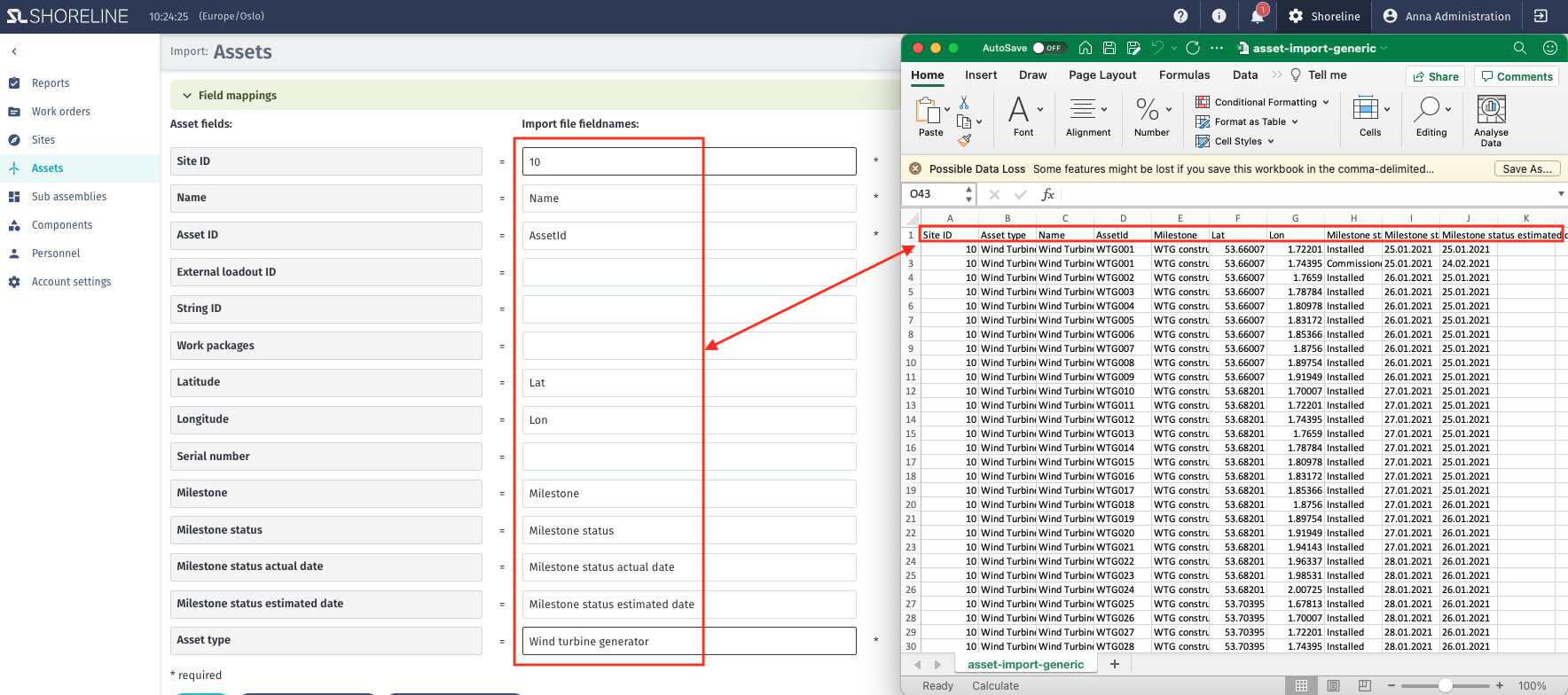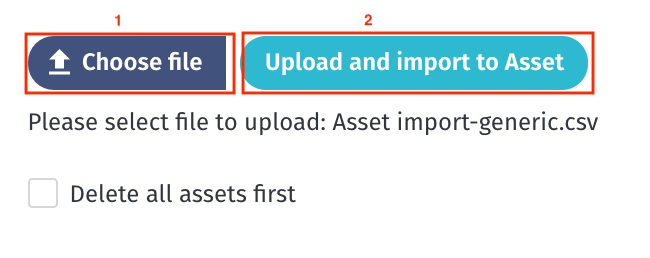Importing Assets
In order to import 'Assets', you will need to be an administrator and have access to the Account Settings. You can find an example file in the following article.
1. Go to 'Account Settings' and Select 'Import'
Navigate to 'Account settings' and select 'Import' to find the 'Assets' option.

OPTIONAL 2. Delete Existing Assets (If Necessary)
If you want to replace assets already existing in the system with the newly imported ones, you can delete them prior to the import. If you have no existing assets or do not want to delete the ones already in the system, skip this step and go to step 3.
To delete, collapse the 'field mappings' tab or scroll down to the bottom of the page to 'Upload and Import'. Check the box for 'Delete all assets first'. Then click on 'Confirm DELETE ALL ASSETS FIRST'.

3. Define Fieldnames
Before selecting the import file, define the 'Import file fieldnames,' which need to be aligned with your .csv file, and click Save. Columns with a (*) are required for a successful import. Some fields have a '? icon' attached for further information regarding the setups. To obtain this information, hover over it with your mouse.

Furthermore, you need to define the mapping types between single column, multiple columns, and fixed value. You can find more information on how to use those different mapping types in this article.
Cables: The fields 1st end position Asset ID and 2nd end position Asset ID along with 1st end latitude, 1st end longitude, 2nd end latitude, and 2nd end longitude are related to the asset type Cable, which can be connected to two assets and have two locations. To import cables, you only need the asset positions the cable is connected to or the end longitudes and latitudes for the cable, not both. Read about how this is set up in the interface under Adding and Editing Assets.
Before importing the .csv file, make sure that the imported data is aligned with the information in the tool, including Site ID, Asset type, Milestone, Milestone status, etc.
4. Import the File
For the import itself, click the Choose File button at the bottom of the page, select the CSV import file, and click open. After the upload, the button below will become available, confirming the import.

The import should only take a few seconds.